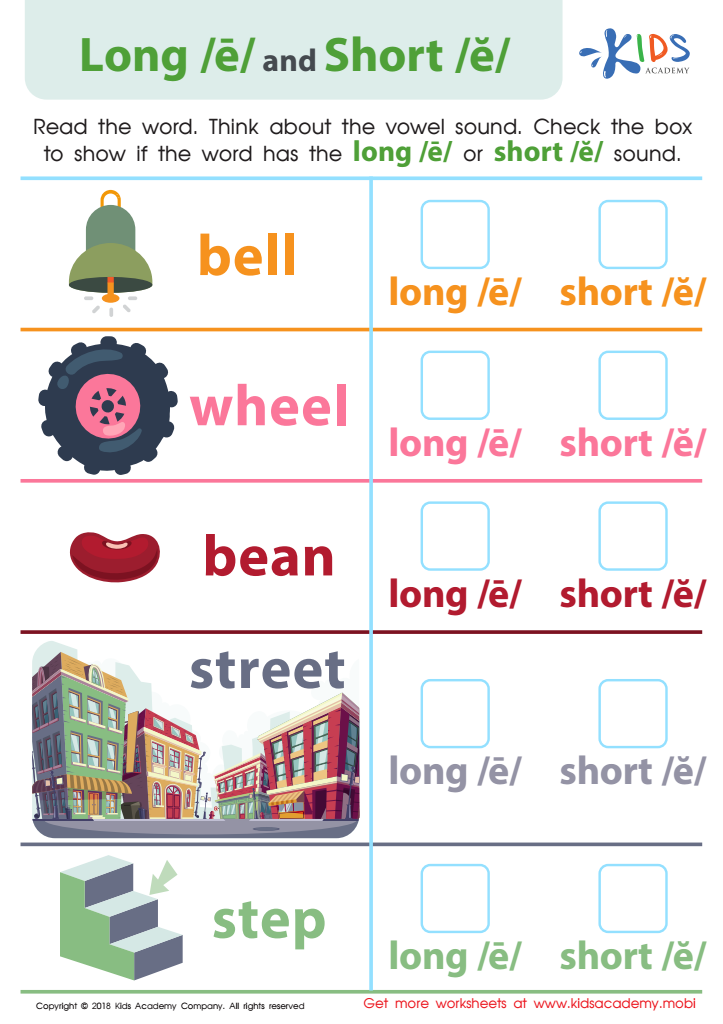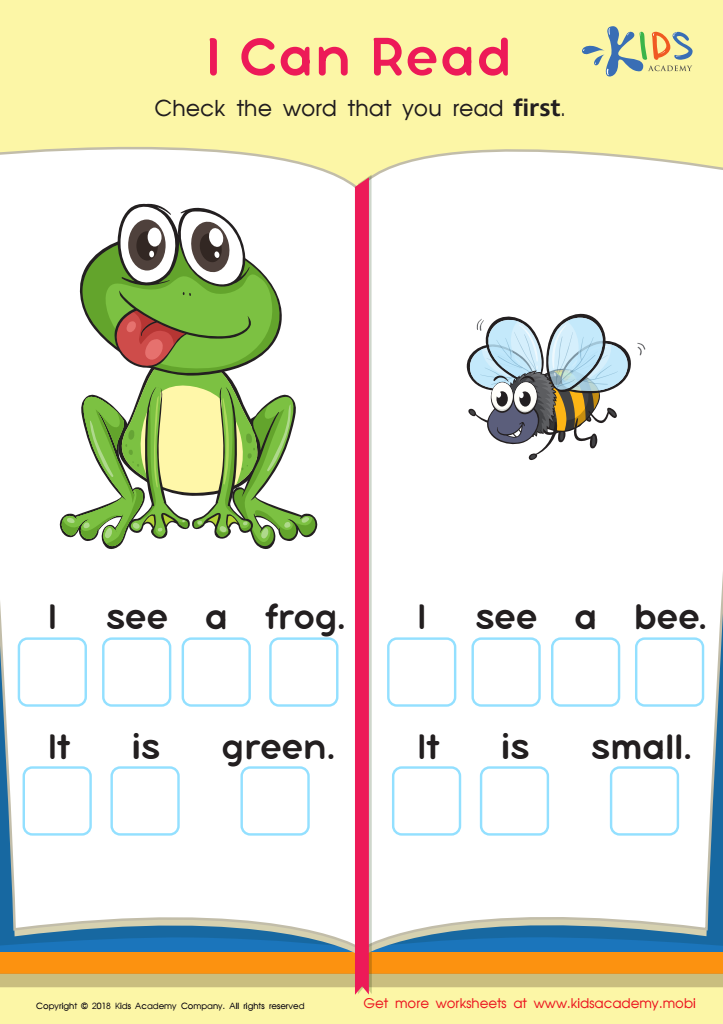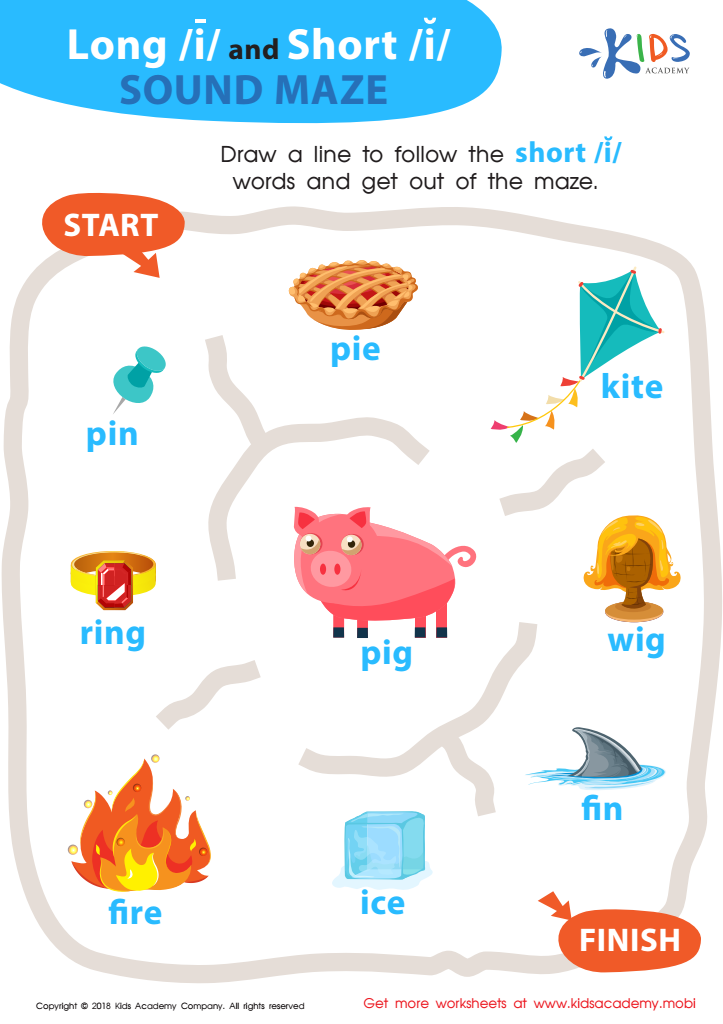Vocabulary enhancement Normal Letter Recognition Worksheets for Ages 4-9
3 filtered results
-
From - To
Boost your child's language skills with our Vocabulary Enhancement Normal Letter Recognition Worksheets, designed specifically for ages 4-9. These engaging worksheets combine letter recognition with enriching vocabulary activities, making learning both fun and effective. Each sheet introduces letters alongside age-appropriate words, helping students connect sounds with meanings. Perfect for classroom use or at-home practice, these resources promote early literacy and cognitive growth. Your little learners will enjoy tracing, identifying, and applying new vocabulary in a creative way. Foster a love for reading and writing from an early age with our thoughtfully crafted materials that support young learners in their educational journey!


Reading: Long E and Short E Worksheet


I Can Read Worksheet


Reading: Long I and Short I Sound Maze Worksheet
Vocabulary enhancement and normal letter recognition are crucial for children aged 4-9 as they lay the foundation for literacy and overall academic success. At this age, children's brains are highly impressionable, and their exposure to rich vocabulary significantly impacts their cognitive development, comprehension skills, and confidence in communication. A robust vocabulary empowers children to express their thoughts and emotions, understand instructions and stories, and engage in meaningful conversations with peers and adults.
Furthermore, normal letter recognition plays an essential role in helping children transition from pre-reading skills to actual reading abilities. Recognizing letters and their corresponding sounds enables children to decode words, which is vital for reading fluency. This early literacy skill contributes to better performance in subjects across the curriculum, as reading proficiency is a gateway to learning in all areas.
Teachers and parents should care about these aspects because strong vocabulary and letter recognition result in improved academic outcomes and a lifelong love for reading. Encouraging exploration of language through books, games, and conversations can ignite curiosity and motivate children to expand their learning horizons. Supporting children during this critical period ultimately fosters their growth into confident, literate individuals ready to excel in their education.
 Assign to My Students
Assign to My Students
















